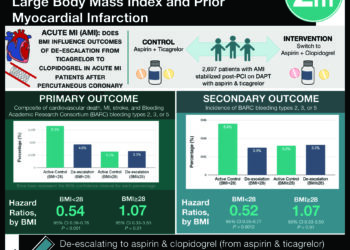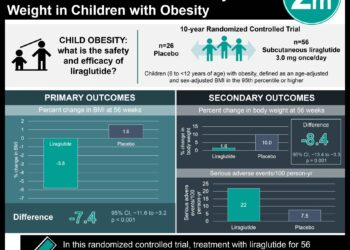Family meal dynamics linked to childhood weight
1. Overweight and obese children were significantly more likely to eat meals quickly and to eat in a room other than the kitchen.
2. Positive family dynamics during meals (e.g. group enjoyment, relationship quality, and warmth) were associated with a reduced prevalence of overweight and obese weight status in children.
Study Rundown: Frequent family meals have been associated with a reduced risk of childhood obesity, but little is known about how family dynamics during these meals affect health outcomes such as weight. This study evaluated the characteristics of family meals, family and food-related dynamics, and the associations between these dynamics and childhood weight status. Overweight and obese children were more likely to eat quickly, less likely to eat in the kitchen, and less likely to have a father or stepfather at the meal. Positive family relationships such as group enjoyment, relationship quality, and warmth (expressing appreciation, praise, concern, or support) were seen in children who were less likely to be overweight. Hostility, parental indulgence/permissiveness, inconsistent discipline, and food moralizing (preaching about good/bad food) were associated with overweight and obese children. Participants may have modified behavior due to direct observation by video recording. Nonetheless, clinicians could encourage patients to more consistently participate in family meals and improve their mealtime dynamics.
Click to read the study, published today in Pediatrics
Relevant Reading: Observation of family functioning at mealtime
Study Author, Dr. Jerica M. Berge, PhD, MPH, LMFT, CFLE, talks to 2 Minute Medicine: Assistant Professor, University of Minnesota Medical School, Department of Family and Community Medicine.
“Results of the study have implications for health care providers who work with families and children. First, it would be important for providers to simply ask parents whether they are having family meals, for example, during a well-child visit, in order to highlight the importance of family meals. Second, providers could offer a more concrete picture regarding the characteristics of family meals (e.g., family meals can be as short as 20 minutes) so that parents feel they are more doable. Third, providers could discuss specific behaviors parents should encourage around the table (e.g., communication; such as telling parents they can have each family member tell a high and a low from their day) to help families participate in more family meals. In addition, public health researchers who use family-based interventions may want to focus on promoting positive (e.g., group enjoyment, relationship quality) versus negative (e.g., hostility, parental inconsistent discipline) interpersonal dynamics during family meals to help more families benefit from the protective nature of family meals.”
In-Depth [cross sectional study]: Participants included 120 children (mean age of 9 years; 74% African American) and their families from diverse and low-income areas of Minneapolis/St. Paul. Families were asked to video record 8 consecutive family dinners via provided iPad. Researchers independently viewed the recordings and coded family interactions and food-related dynamics based on the Iowa Family Interaction Rating Scales. Children who were overweight had shorter meal times (p = .02), were less likely to eat in the kitchen (p = .03), and were more likely to eat in the family room (p = .01), offices or bedrooms (p = .04). Children who were normal weight were more likely to have a father or stepfather present at the meal (p = .01). When adjusted for age, race, gender, and primary caregiver’s BMI, the following characteristics were associated with a reduced prevalence of overweight/obese children: group enjoyment (p = .03), relationship quality (p =.05), and warmth (p <.01). In contrast, hostility (p = .05), parental indulgent/permissive (p = .03), parental inconsistent discipline (p = .04), and food lecture/moralizing (p = .02) were associated with an increased prevalence of overweight and obesity in children.
More from this author: Physician-rating sites influential in choosing primary care doctors, Majority of vaccine-induced seizures linked to underlying epilepsy syndromes, Preterm birth associated with cardiovascular risk factors in adolescence, Parental conceptions of weight are becoming increasingly inaccurate, Vitamin K refusal for newborns linked to non-immunization
Image: PD
©2012-2014 2minutemedicine.com. All rights reserved. No works may be reproduced without expressed written consent from 2minutemedicine.com. Disclaimer: We present factual information directly from peer reviewed medical journals. No post should be construed as medical advice and is not intended as such by the authors, editors, staff or by 2minutemedicine.com. PLEASE SEE A HEALTHCARE PROVIDER IN YOUR AREA IF YOU SEEK MEDICAL ADVICE OF ANY SORT.







